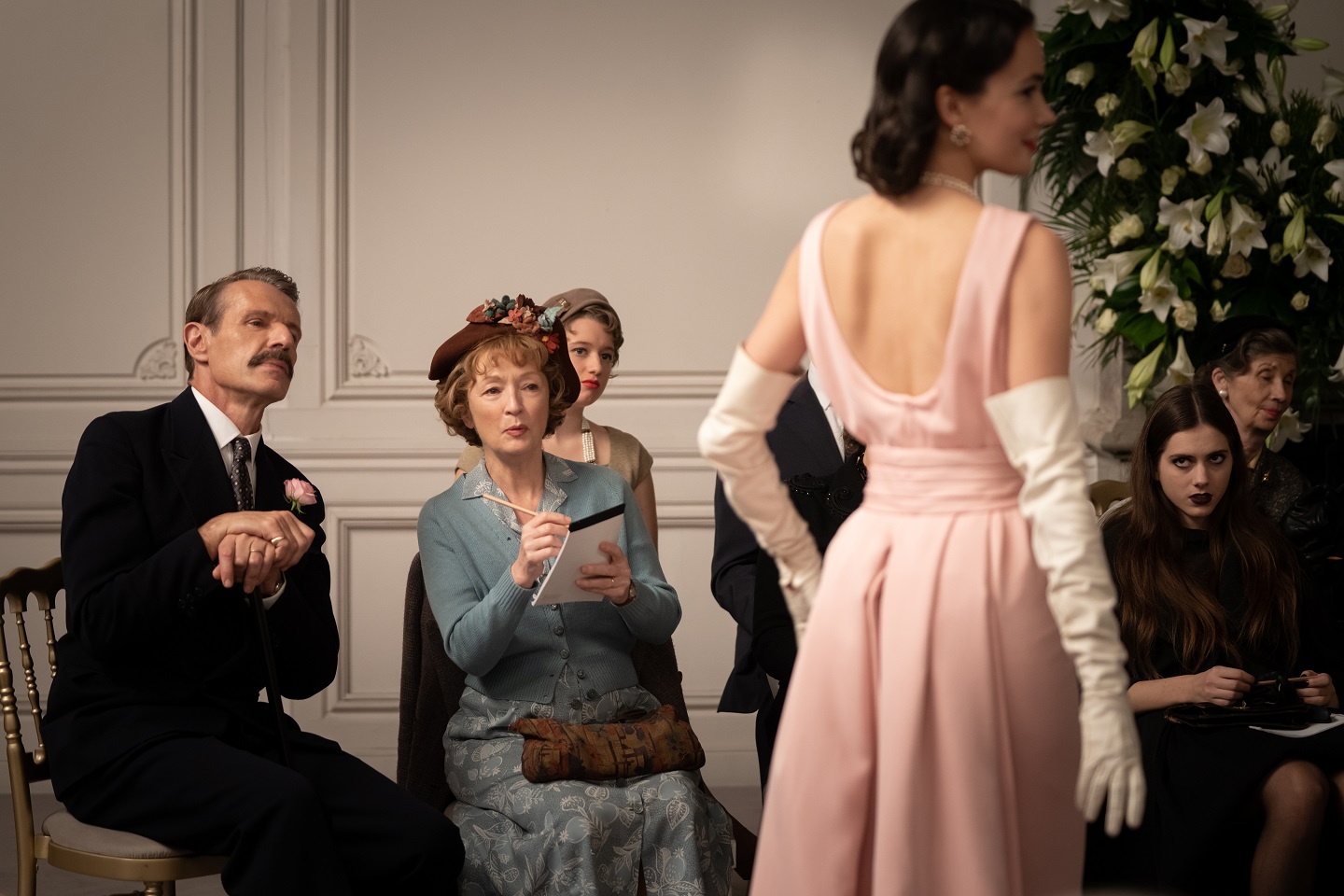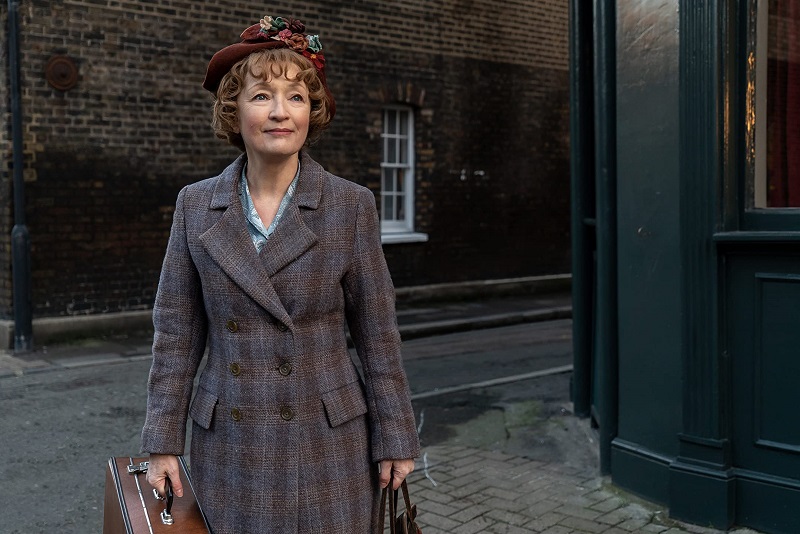
The film received nominations for Best Costume Design from the Academy Awards and the Bafta Award for Best Costume Design (Photo: Dávid Lukács)
There is that inciting incident in the movie Mrs Harris Goes to Paris, when Ada Harris first sees a Dior gown draped over the chair, glittering in the shaft of sunlight through the window, winking at the film’s titular character, and at us, the audience. This pivotal moment teeters on the precipice of sentimentality, then soars in the hands of such a charming protagonist that we all get that wink, that sense of something larger than mere clothing. As Mrs Harris holds the Dior gown against herself, the camera lingers on the side she sees — a woman made invisible by her labour and age now transformed by a single resplendent gown — and the audience collectively remembers the sensation of holding up an outfit so transformative that it brings a glint to the eye and the chin rises.
Lesley Manville, as Mrs Harris, is deft in churning out the saccharine charm of this movie, based on a premise so maudlin that it could have flopped terribly. The heroine is a working-class London charwoman — “You are nobody. Invisible” — but also an indefatigable optimist who dreams of owning a couture dress from Dior. In a series of fortuitous twists of fate, she saves up enough money to make her dream come true. When she finally travels to Paris to purchase the dress, she finds herself swept up in the world of high fashion and luxury, and her adventures lead her to a greater sense of self-worth and romance and — spoiler alert! — change the future of the House of Dior.
mrs_harris_goes_to_paris_3.jpg

The timing of the release of this movie was also providential: the world was finally coming out of the bleakest Covid-19 restrictions and the sudden loss of lives during the pandemic had been as traumatic as any war, with many of us unable to bid a final goodbye to someone we loved dearly. We were primed for a feel-good movie, with great courage, the hope of love and strong friendships. The pandemic had reduced us to a basic fight for survival, and caring deeply about something that seemed outwardly frivolous was a privileged world we had forgotten how to inhabit. Mrs Harris Goes to Paris landed on our screens with a message of conquering months of loss with unrestrained hope and bringing to life the joy in things of artisanal beauty.
During a Q&A, the film’s director, Anthony Fabian, said that Dior, after the austerity of the war, “created these designs that were opulent with tonnes of fabric, almost obscene amounts of expensive fabric. It completely caught everyone’s imagination, just as I hope that Mrs Harris coming out after Covid-19 will capture people’s imagination because people want fantasy and they want escape”.
In order to duplicate what Dior had achieved, Fabian deliberately veered away from the book and showed the 10th anniversary Dior collection through iconic dresses that represented an entire decade. The movie is set in 1957, but there are dresses from earlier, such as the Miss Dior from 1949, which is the first dress that Mrs Harris is enchanted by in Lady Dant’s bedroom. The dress — called Venus — in the collection is inspired by an earlier dress, but Temptation was based on a dress from 1957. By playing with the timeline of archetypal Dior creations, the movie was able to convey a sense of the House of Dior’s dazzling oeuvre through one scene.
Luciana Arrighi, the production designer, and Jenny Beavan, the costume designer, recreated the magic. The film’s designers scoured the Dior archives and it shows on screen, transporting us all into a time when men and women dressed opulently for dinner, a tribute to a yesteryear only available through the lens of such cinematic nostalgia. When Mrs Harris exclaims “It’s not sewing, it’s making moonlight”, it doesn’t seem like hyperbole, for the gown is incandescent on screen (the movie received nominations for Best Costume Design from the Academy Awards and the Bafta Award for Best Costume Design).
Mrs Harris was first introduced in 1958, in a novel authored by Paul Gallico (titled Mrs ‘Arris Goes to Paris); the novel presented a portrait of post-World War II Paris and London, with the attendant themes of class aspirations and the transformative power of beauty through haute couture. The book has since been filmed three times (in 1992, Angela Lansbury starred in the popular TV movie), but no other version is as opulent as what was captured in one hour and 55 minutes of screentime in 2022.
Ada could have become a clichéd embodiment of the idea that anyone can achieve their dreams with hard work, determination, and a little bit of luck, but in the hands of Manville, she is an inspiring and endearing protagonist. It may be a story set in Europe almost a century ago, but the story is universal. As anyone who has felt the sinuous fall of exquisite silk on bare skin already knows — perhaps in the drape of a kebaya, the pallu of a sari, or the swish of a cheongsam — the transformative power of an outfit may seem insubstantial but is as strong as renewed hope, and that is what we cheer for in Mrs Harris Goes to Paris and in ourselves.
This article first appeared on Apr 10, 2023 in The Edge Malaysia.


